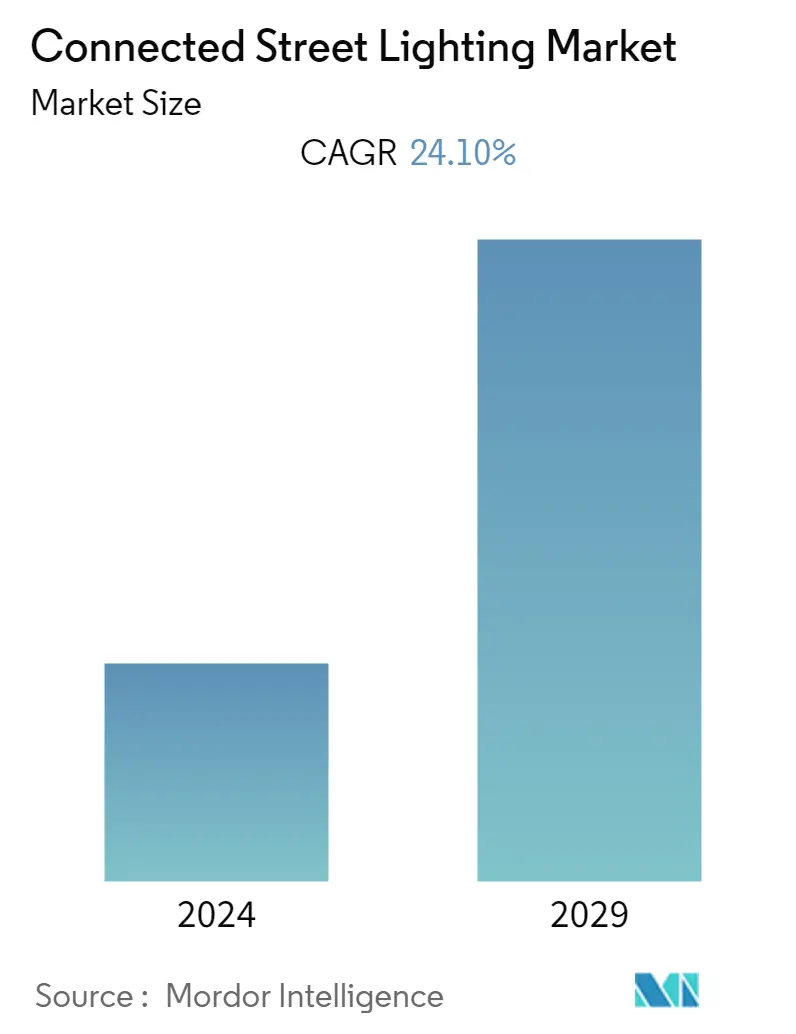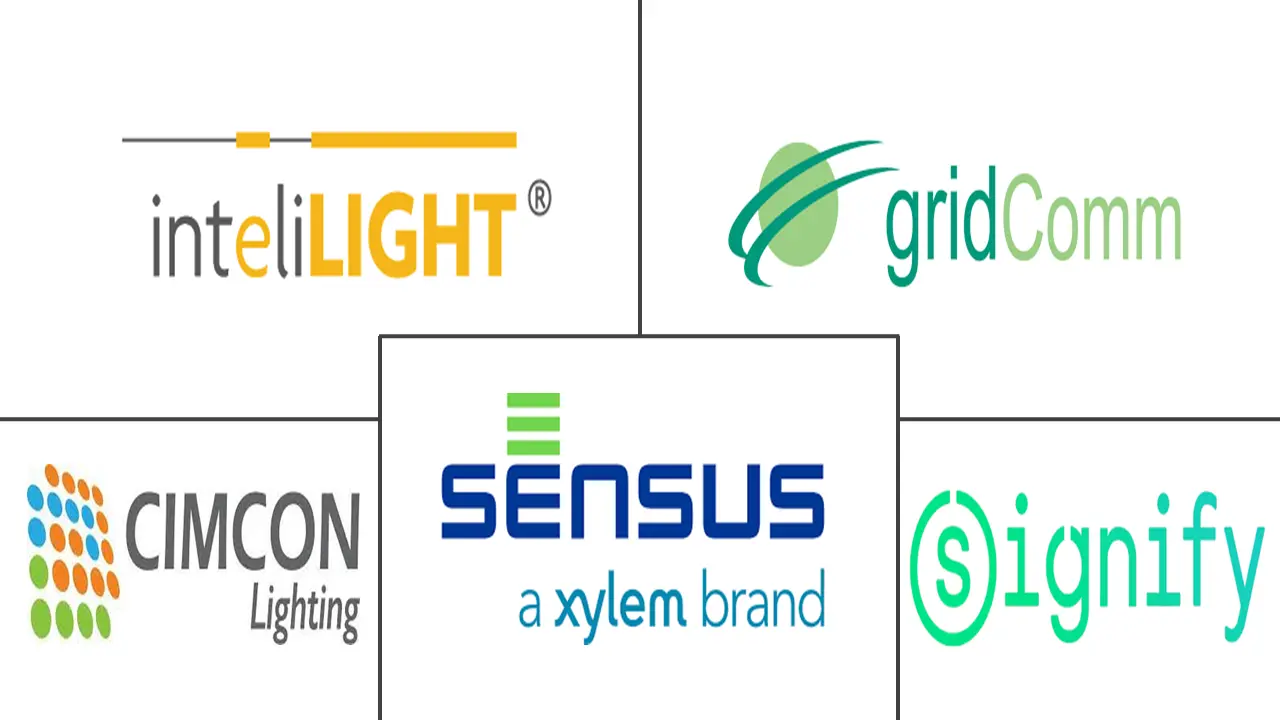Market Size of Connected Street Lighting Industry

| Study Period | 2019 - 2029 |
| Base Year For Estimation | 2023 |
| CAGR | 24.10 % |
| Fastest Growing Market | Asia Pacific |
| Largest Market | North America |
| Market Concentration | Low |
Major Players
*Disclaimer: Major Players sorted in no particular order |
Need a report that reflects how COVID-19 has impacted this market and its growth?
Connected Street Lighting Market Analysis
The connected street lighting market is expected to witness a CAGR of 24.1% over the forecast period. Aided by the rising number of smart cities and increasing awareness of energy conservation and effective lighting methods, the market is expected to grow further in the forecast period.
- Connected street lighting also enables governments to use their street lights for Wi-Fi access. These access points can be used by city personnel to lower their cellular data usage, reducing the city's expenses. Wi-Fi access points can also provide internet access to local businesses and residents, providing the city with new leasing or advertising revenues. In addition, cities can use these Wi-Fi access points to help bridge the digital divide by delivering poorer city residents free or low-cost internet access. Smart parking meters or pay stations attached or connected to light poles can also eliminate the costs associated with trenching for standalone meters and pay stations.
- Additionally, there have been considerable advancements in connecting technologies in recent times. Traditionally, cities trying to centralize connectivity for smart street lighting used proprietary gateways connecting to smaller segments of streetlights that are priorly connected via low-bandwidth communications, such as a power line carrier (PLC) or local RF mesh network adhering to several IEEE standards.
- While various proprietary RF mesh or star networks currently account for the majority of smart street lighting installations, the adoption of low-power wide-area (LPWA) technologies such as narrowband IoT (NB-IoT) and long-range (LoRa) is growing fast, particularly in the European and Asian markets.
- Poor infrastructure in developing economies is expected to limit demand for connected street lights in the next few years. This can be ascribed to underdeveloped network infrastructure and low internet penetration, which leads to less bandwidth availability.
- The connected street lighting market has also been significantly affected by the outbreak of COVID-19 as other industries and companies have been forced to restructure their strategies to deal with the ongoing pandemic. Companies such as Telensa and Itron were among the worst hit due to this pandemic.

